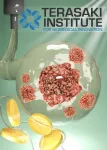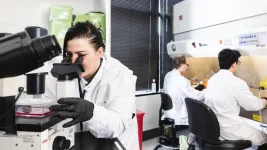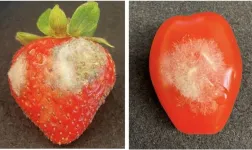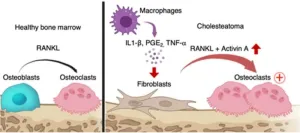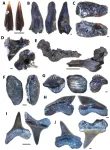(Press-News.org) In an era of unprecedented LGBTQ2+ visibility coupled with incredible backlash, coming out as a sexual minority can be a deeply ambivalent experience, according to new research.
In a study published in Theory and Society, sociologists Dr. Amin Ghaziani and Andy Holmes conducted in-depth interviews with 52 adult Vancouverites about their experiences coming out over the last five years.
We spoke to Dr. Ghaziani (he/him), professor in the UBC department of sociology and Canada Research Chair in Urban Sexualities, about the findings.
Why were you interested in recent experiences of coming out?
Coming out is about sharing your identity with someone, and it’s an ongoing process that happens at different times with different people.
In the 1980s and 1990s, coming out was a transformative act, although still very much a struggle, in a homophobic society. In the 2000s and 2010s, the narrative changed from what we might call “struggle and success” to “emancipation” as people in the West generally found more acceptance in society. Coming out became less formal and less fraught.
Today, LGBTQ2+ people have more visibility than ever before, with more than four per cent of Canada’s population identifying as LGBTQ2+ and 7.2 per cent for American adults in a 2022 Gallup poll, double what it was when Gallup first measured sexuality a decade ago.
Despite political progress on both sides of the border, there’s been a lot of troubling backlash. In Vancouver, violent anti-trans hate crimes have been on the rise for a few years. And in the U.S., state legislatures introduced 525 anti-LGBTQ2+ bills just this year.
We live in a curious moment today of unprecedented progress and brutal backlash. How do these crisscrossing currents affect coming out? That’s what we wanted to figure out.
What did you find?
In short, it’s complicated. Neither a narrative of struggle and success nor emancipation fully captures what it’s like to come out today. Instead, we found that people are deeply ambivalent.
One reason for this ambivalence is an awareness among young people today of significant generational differences. For example, Hugh, a Chinese gay man we spoke to, saw firsthand how attitudes differ between Gen Z, for whom coming out is often met with easy acceptance, and older colleagues at work who were thrown out of their homes when they came out. For Hugh, a millennial, coming out was somewhere in between. It was “awful,” he said, and it took years to plan, but when it happened, “it just happened,” and didn’t feel triumphant.
Pride celebrations can make things more confusing. Another respondent, Silky, describes why it’s hard to come out this time of year. “I don’t feel like I belong because I’m dating a man,” she told us. Although Silky lives in Davie Village, where “Pride is literally happening all around my house,” she hears “gay people in the crowd” who say things like, “I hate all these straight couples at Pride.”
Hearing this makes Silky, who identifies as bi, feel like an outsider. As she says, “I feel a little bit more like I belong when I’m not physically with my partner, which is really sad. I shouldn’t have to walk around Pride wearing this big shirt that says, ‘I’m bi.’”
What can be done to support individuals wanting to come out today?
Most people live in a grey area in between the extremes of a liberal, accepting society and one wracked by relentless bigotry and discrimination. That affects how we think about our sexuality: it distinguishes us, but it doesn’t necessarily define us, at least not all the time.
When it comes to practical steps, institutions still play a big role in the after-effects of coming out goes. Having policies that protect against discrimination based on sexual orientation and gender identity is crucial for creating supportive environments. But when it comes to matters of culture, like what we see on the silver screen, we need more diversity of voices so people can understand and appreciate that there are many ways of coming out and identifying as LGBTQ2+.
END
It’s 2023, and coming out is, well, complicated
2023-08-03
ELSE PRESS RELEASES FROM THIS DATE:
Enhanced tumor modeling using Laponite bioinks for 3D bioprinting
2023-08-03
(LOS ANGELES) – August 3, 2023 - Scientists from the Terasaki Institute for Biomedical Innovation (TIBI) have developed a nanoengineered bioink with improved bonding and cross-linking capabilities for 3D bioprinting of tumor models. A key component of this bioink is Laponite, highly charged, disk-shaped, crystalline nanoparticles. As explained in their recent paper in Biofabrication, these nanoparticles were shown to enhance the biological signaling that occurs in the tumor microenvironment ...
Sharing on Facebook reveals 2 very different news environments
2023-08-03
COLUMBUS, Ohio – A first-of-its-kind study examined 2.2 million news stories shared on Facebook and found that publishers create two very different news environments.
These distinct ecosystems involve low-credibility publishers – those that publish what is sometimes referred to as fake news – versus high-credibility publishers.
Findings showed that while these two types of publishers often pushed out bursts of coverage at the same time – a common feature of news coverage – they were often about different topics, said Kelly Garrett, senior author of the study and professor of communication at The Ohio State University.
“These ...
The Access to Advanced Health Institute receives $18 million award to develop a temperature stable, single-dose chikungunya RNA vaccine through a phase 1 clinical trial
2023-08-03
The Access to Advanced Health Institute Receives $18 Million Award to Develop a Temperature Stable, Single-Dose Chikungunya RNA Vaccine Through a Phase 1 Clinical Trial
KEY POINTS:
The goal of the award is to develop an effective chikungunya vaccine candidate that can reach endemic areas of the world by using AAHI’s innovative RNA platform technology.
The project will demonstrate that classic large-scale manufacturing challenges of live-attenuated vaccines can be overcome by using standard manufacturing equipment and techniques that are easy to tech transfer and scale.
The award supports a first-in-human clinical trial of a dried (lyophilized) ...
A path to defeating crop-killing gray mold without toxic chemicals
2023-08-03
It’s a mold that causes billions in crop losses every year, infecting berries, tomatoes and most other fruits and vegetables. Now, researchers have found a way to defeat the mold without showering toxic chemicals on the crops.
If you’ve ever seen a fuzzy gray strawberry, you’ve seen gray mold. It affects more than 1,400 different plant species, and there is no real cure for it. Being able to control it may hinge on the discovery of lipid “bubbles” secreted by the ...
Disparities in Black adults’ stroke risk factors persist; risk factor control reduced gap
2023-08-03
Research Highlights:
In a retrospective analysis of stroke patients, Black adults who had a stroke due to a severe blockage of a major artery in the brain (intracranial atherosclerotic stenosis) were younger, had higher rates of high blood pressure and Type 2 diabetes, and had lower physical activity scores compared to non-Black adults.
After one year of aggressive, individualized medical management, including lifestyle coaching and regular follow-up care, diastolic blood pressure and physical activity scores improved among Black adults.
Embargoed until 4 a.m. CT/5 a.m. ET, Thursday, Aug. 3, 2023
DALLAS, Aug. 3, 2023 — Significant stroke risk factor disparities ...
Ear today, gone tomorrow? A new discovery in a cause of inner-ear bone loss
2023-08-03
Osaka, Japan – Chronic inflammation of the middle ear can cause several problems and complications that can affect a person’s hearing and balance. One such problem is the formation of a cholesteatoma, which is an abnormal collection of cells in the ear that can cause bone erosion if left untreated. In turn, this can cause symptoms such as hearing loss, dizziness, facial paralysis, and even a brain infection.
In a study published recently in Nature Communications, researchers from Osaka University have revealed the cause of cholesteatomas, which may help in developing new therapies for patients who are suffering ...
TENS machine provides cheaper and non-invasive treatment for sleep apnoea
2023-08-03
A machine commonly used for pain relief has shown to improve breathing in patients with obstructive sleep apnoea, a clinical trial has found.
Results of the TESLA trial, published today in eClinical Medicine by researchers from King’s College London and Guy’s & St Thomas’ NHS Foundation Trust, shows the potential of a new therapeutic option for patients using a transcutaneous electrical stimulation (TENS) machine.
Sleep apnoea affects about 1 billion people worldwide, and millions in the UK. The condition can be frequently associated with snoring; ...
Better coaching to promote a person’s growth
2023-08-03
CLEVELAND—What if there was a more effective way to coach and inspire your employees? Athletes? Students? Even your kids?
A new study by a team of researchers from Case Western Reserve University suggests there is.
Their newly published work used neuroimaging to peer into the brains of participants as they responded to two different styles of coaching. The researchers wanted to see what happens in the brain that either helps people grow or causes them to resist change.
“You could say it’s about how we get around the problem that you can lead a horse to water, but you can't make it drink,” said Anthony “Tony” ...
Canadian paleontologists discover microvertebrate faunal assemblages in Manitoba, Canada
2023-08-03
Canadian vertebrate palaeontologist, Aaron Kilmury, and a team of researchers from the University of Manitoba have published new research in PeerJ Life and Environment, unveiling the first-ever formal description of microvertebrate fossil assemblages from the late Cenomanian to middle Turonian periods in Manitoba, Canada.
“One of the most significant findings of this study is that the new microvertebrate material described from Manitoba shares several similarities with microvertebrate assemblages collected ...
Robots cause company profits to fall – at least at first
2023-08-03
Researchers have found that robots can have a ‘U-shaped’ effect on profits: causing profit margins to fall at first, before eventually rising again.
The researchers, from the University of Cambridge, studied industry data from the UK and 24 other European countries between 1995 and 2017, and found that at low levels of adoption, robots have a negative effect on profit margins. But at higher levels of adoption, robots can help increase profits.
According to the researchers, this U-shaped phenomenon is due to the relationship between reducing costs, developing new processes ...
